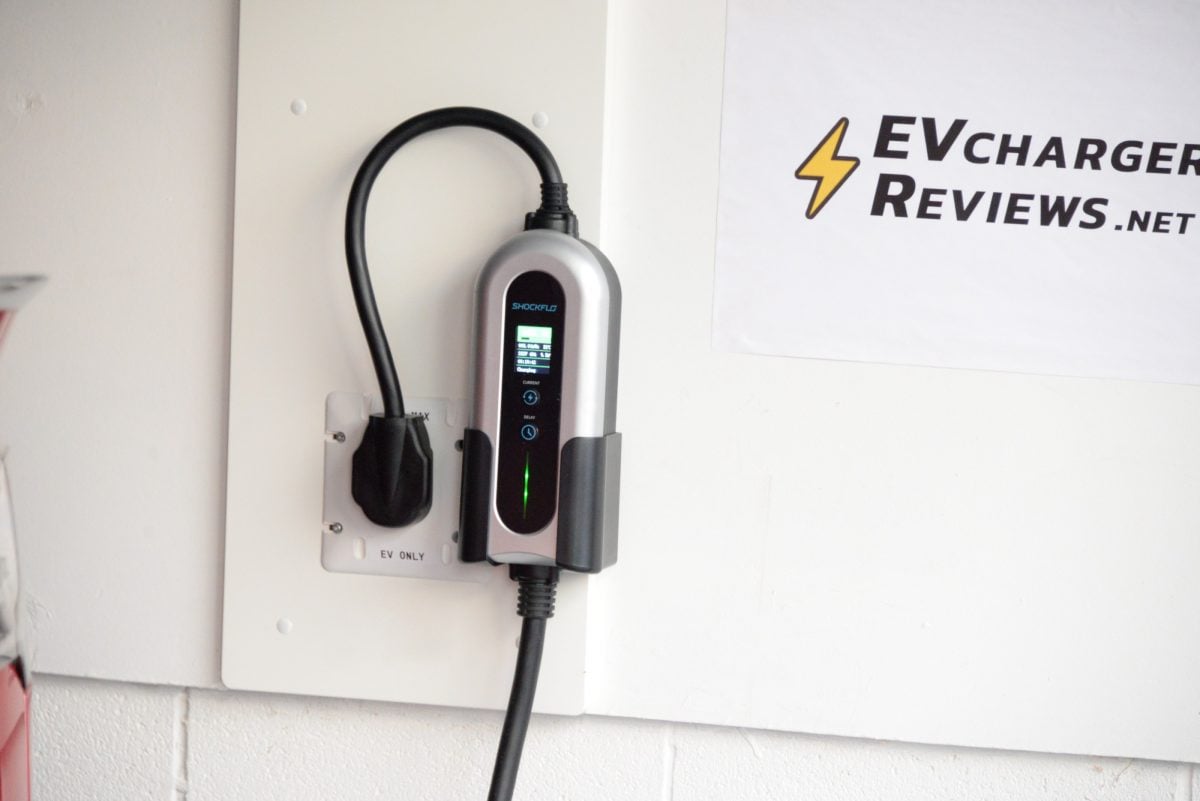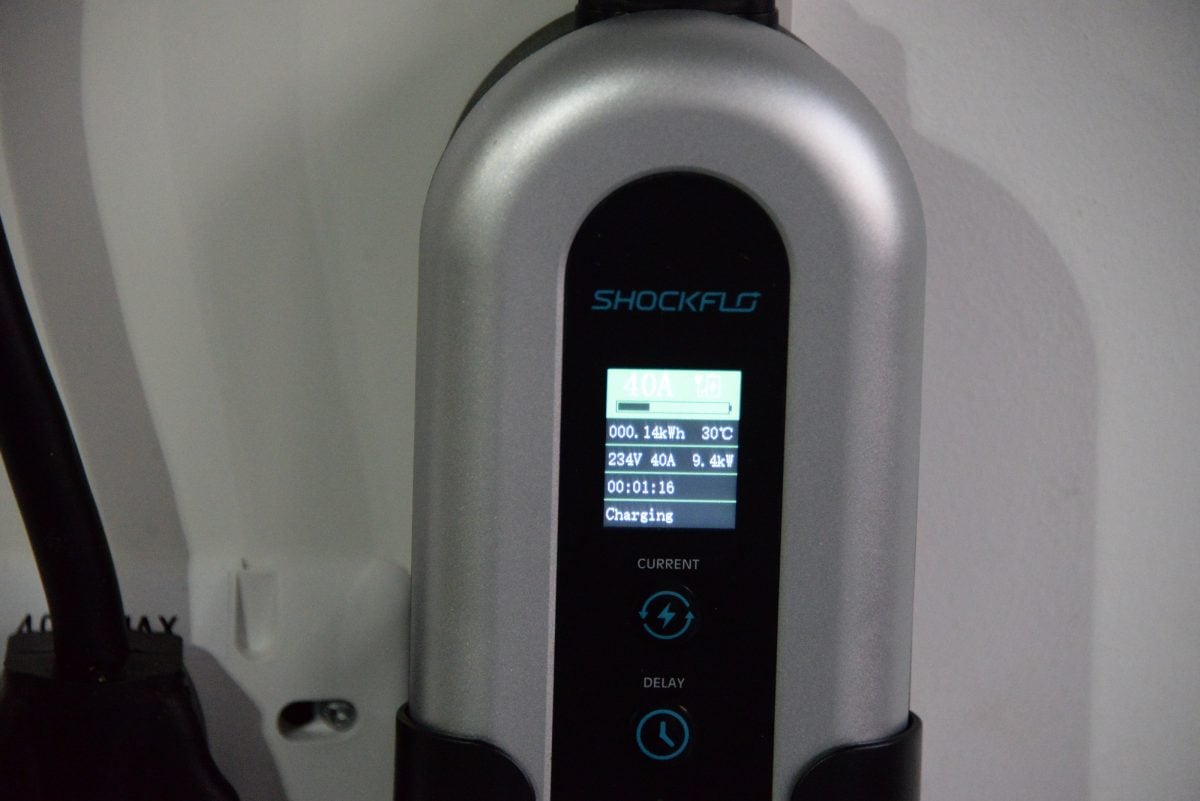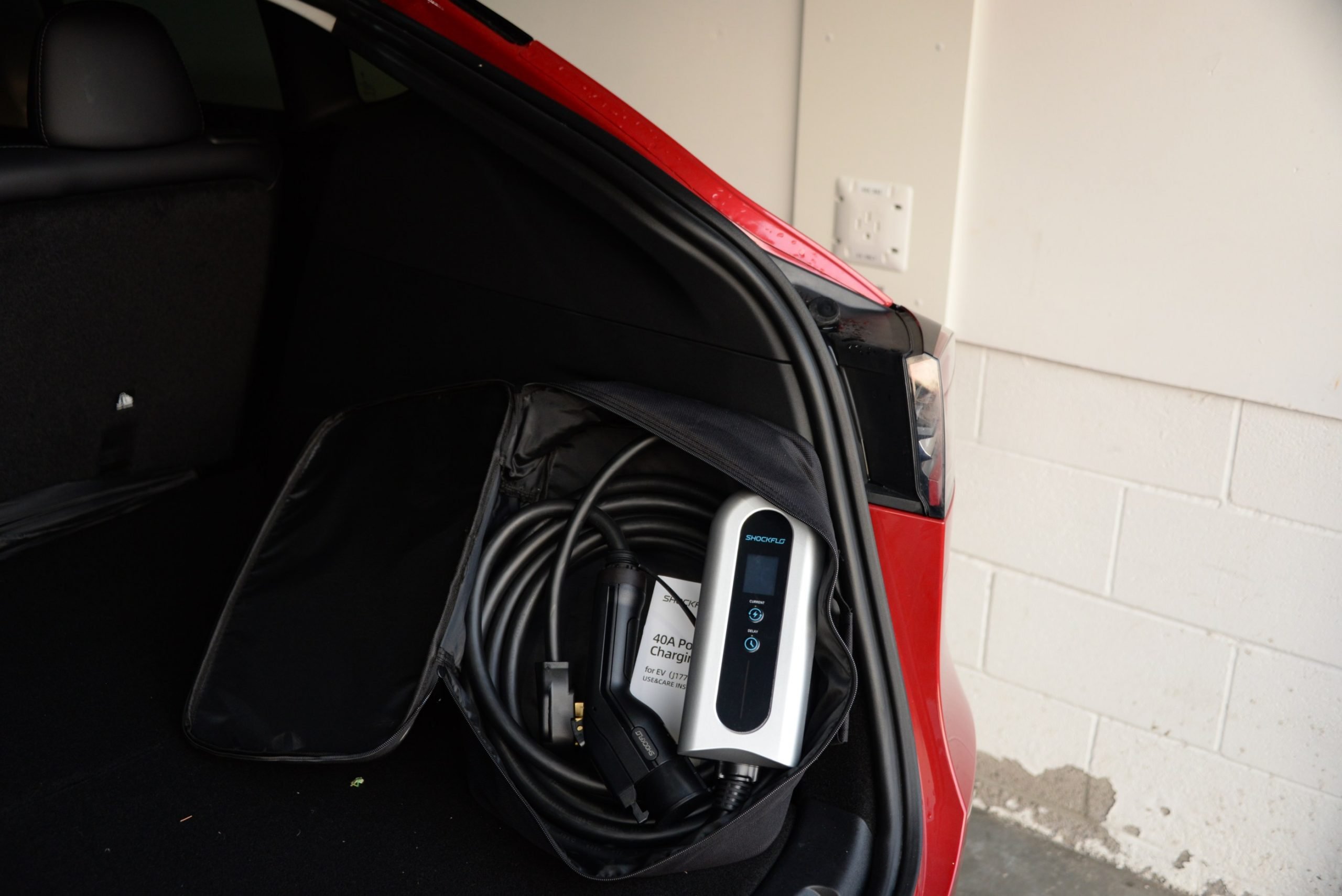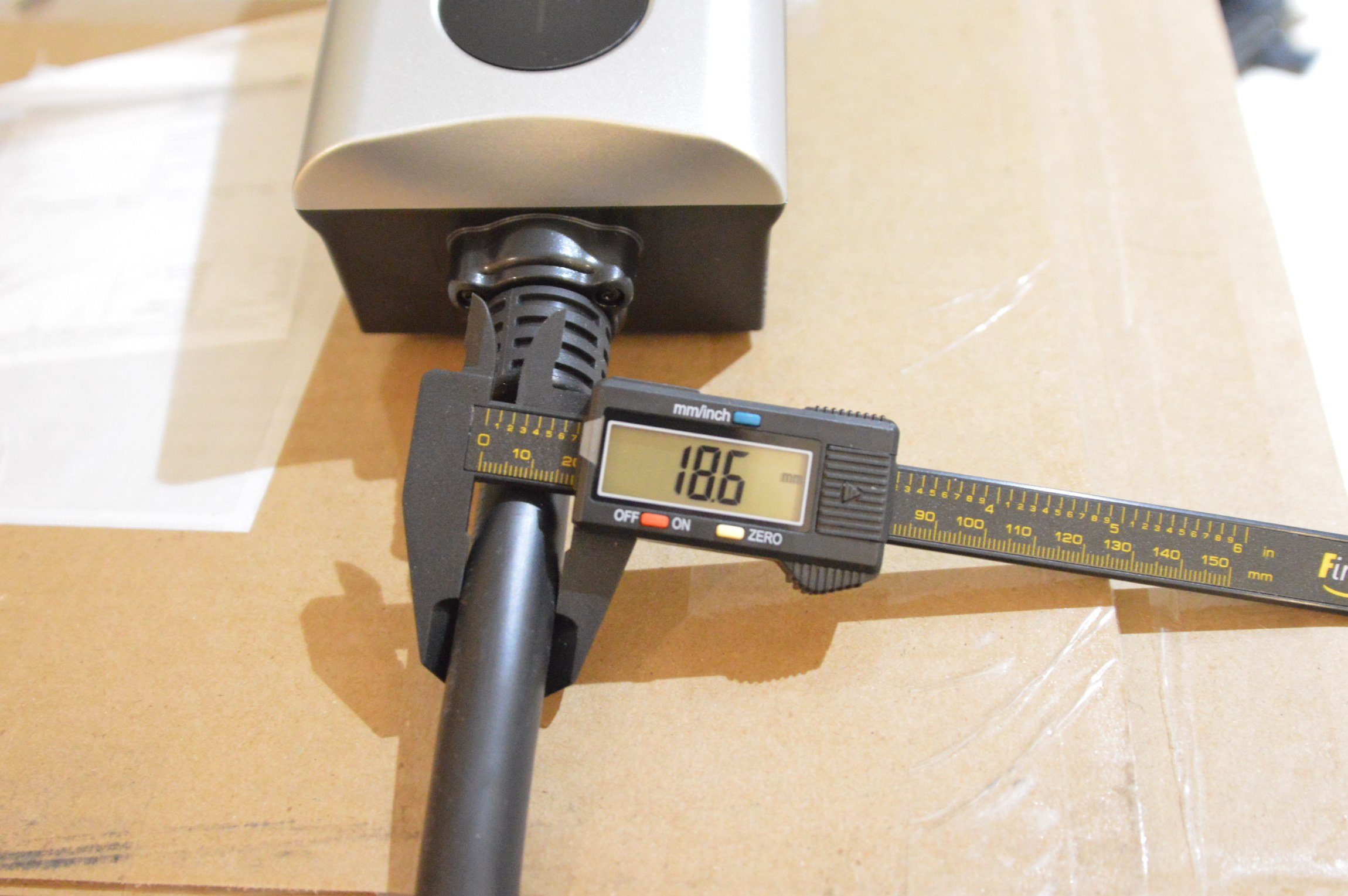The ShockFlo G1 is a recently released portable EVSE that is gaining popularity and positive user reviews. This unit is available in 32 and 40-amp configurations, connects to the wall via a NEMA 14-50 plug, and has a J1772 connector for charging virtually any new EV. The 20-foot cord length balances portability and utility, and we generally had very few complaints about the product. The ShockFlo portable EV charger is for someone looking for the full power of a home charging station that can occasionally be used for travel.
Our Rating: 4.2/5
Hardware Overview
The ShockFlo portable EV charger hardware consists of a rectangular case (about 10 by 4 by 2.5 inches) with a NEMA 14-50 input cord at the top, and a J1772 output coming out of the bottom. The input cord is about a foot and a half long. The top of the case is rounded for aesthetics, while the bottom is squared off to match the included wall mounting bracket. This wall mounting bracket is made of black plastic and includes two screws for home installation. While the mounting bracket is not the most durable, it is still nice to have because few other portable EV chargers include one in the box. The entire length of the cord is about 20 feet, making it about the same length as an average parking space.
The front of the device has a small color LCD screen, two hardware buttons, and a status LED light. The screen displays critical charging information the entire time while the unit is plugged in. Information about: amperage mode, status, energy in kWh, power in kW, voltage, temperature, and session duration.
The first hardware button is used to change between different amperage modes. By default, the highest mode (40 or 32 amps depending on model) will be selected, but the driver is able to select 16, 20, or 24 amp modes if charging from a lower power circuit.
The other hardware button controls a delay timer, so the charging session could be programmed to commence when energy is less expensive. Alternatively, you could leave this option alone and schedule charging from most modern EVs.
Lastly, as any good portable EV charger, the ShockFlo unit comes with a (nylon?) carrying case to protect the unit on the road, and a rubber protection cap for the J1772 end to keep the connectors clean from dust and debris.
The charger casing is rated for IP67 water resistance, so it will be able to withstand the elements while charging outdoors. However, it must be prevented from flooding or submergence into a pool of water.



Charging Cord and J1772 Connector
Portable EV chargers need to strike a balance of durability as well as lightness for portability, and therefore usually use thinner cords. The ShockFlo portable charger has a very substantial feeling cord. While it is not as thick and durable as their home charging station, the cord is still thicker than many other portable products, including Tesla’s Mobile Connector. And we’re happy that ShockFlo selected a think cord, because it needs to handle a full 40 amps. (Most portable units top out at 32 amps) The cord gets slightly warm to the touch while pulling the full 40 amps from the wall, but not concerningly so.
The J1772 end of the charger is on par with other products in this class. The connector is made of lightweight black plastic but feels durable enough in the hand. The release button is nice and clicky, and we didn’t have any compatibility issues with either the Tesla/J1772 adapter or the native port of a VW ID.4. Teslas come with a J1772 adapter from the factory, but if you want to buy an additional one, ShockFlow also sells their own version that undercuts Tesla’s price.
We measured the cord to be 18.6 mm thick, which is on the heavier side for a portable EV charger. But this should help with long-term team durability.


Screen and Charging Performance
The screen is very clear and bright enough for indoor usage, but it does get washed out a little when used outside. Why even have a screen on the charger when the EV will display most of this Information inside? More accurate energy consumption measurement. Because the EV charger will accurately measure all of the energy that flows through it, but the EV will only count the energy added into the battery because will be some losses during charging. Therefore the energy consumption displayed by the EV charger is a closer approximation of the energy pulled from the wall.
We had no issues charging either one of our Test vehicles (Tesla Model Y and VW ID.4). The charging sessions commenced immediately after plugging in, and the charger communicated the maximum amp mode to the car. The unit peaked at a temperature of 131°F (55° C) while pulling 40 amps, with an ambient temperature of 77° Fahrenheit.

Conclusion
The ShockFlo portable EV charger represents a good value for a portable unit capable of charging at a full 40 amps. As we mentioned, most portable units from the competition only go up to 32 amps. The unit performs without fault and offers a good-quality cord that is neither too long or too short. The brand is also shows confidence in their products by offering a 3-year warranty while many competitors only offer 1 year. If we had to nitpick, we would like to see a J1772 holster included for home usage. Otherwise, the cord has to be wrapped around the charger when not in use. (You can buy third-party holsters on Amazon)
Shopping Options
Full Review Gallery













EVchargerReviews.net EVSE Review Methodology
We get the product into our facility, unbox it, inspect it, and install it just like the end user. We have a two-EV car garage with many electric miles accumulating weekly. We take EVSEs through a suite of tests, from short charging sessions, to long overnight charging sessions. We look at whether the claimed features work as expected. We check performance under challenging conditions; does the cord hold up to cold weather? Does the charging station throttle down amps due to heat and thermals? Does the Wi-Fi or Bluetooth drop the connection? Software bugs and glitches will surface during longer-term testing rather than a one-day trial. Measurements are taken on cord thickness and performance, and a thermal camera is used to look for surface hot spots after a 50 kWh stress test.
After living with the charging station product for at least two weeks, we are able to determine how the product compares to rivals, and if it deserves to be recommended to our readers.
Disclosure: Independent review by Michael Kim from EVchargerReviews.net. We participate in affiliate programs, and we may earn income when you use our links. We hope you think that is fair, based on the amount of work that goes into our reviews.
Considering buying a Tesla? Use our referral link to get $1,000 off, and help support our content.
